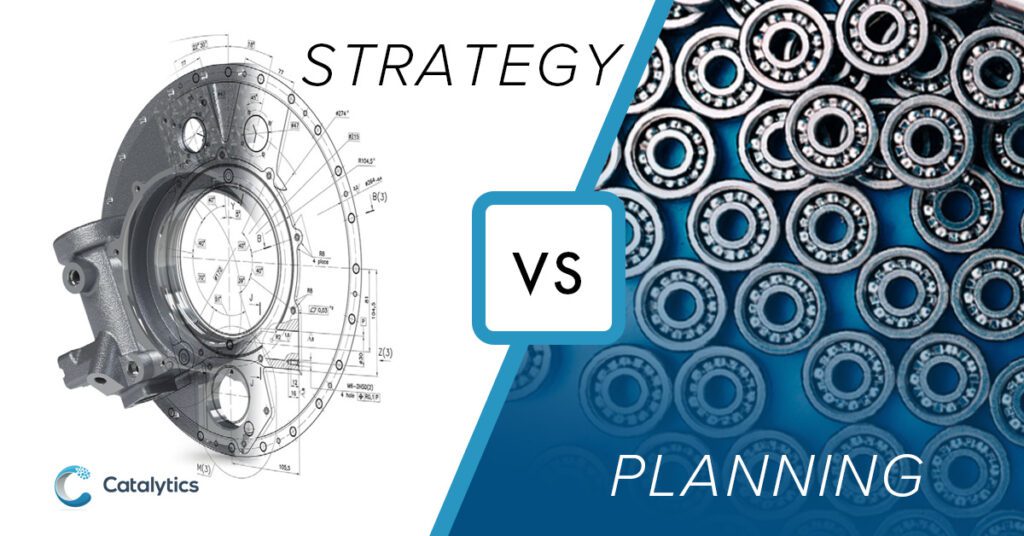The Importance of Understanding the Difference between AI Strategy and AI Plan:
Insights for C-Suite Leaders
As an Analytics Consultant, I often encounter organizations that believe they have an “Artificial Intelligence Strategy.” However, upon further examination, I find that what they have is actually an “Artifical Intelligence Plan.” This distinction is critical for organizations to understand as it can have significant implications for their success in leveraging Artificial Intelligence (AI) to achieve their goals.
As renowned management thinker, Roger Martin, has said “At least 90% of all the strategy that goes on in the world is planning, not strategy.”
In this blog post, I aim to educate C-suite leaders about the differences between an AI Plan and an AI Strategy and why it is important for their organization to have a well-defined AI Strategy.
What is a Plan?
A plan is a detailed, step-by-step approach for achieving a specific goal. It usually includes a timeline, resources, and methods needed to reach the desired outcome.
AI plans often focus on implementing AI projects, such as hiring data scientists, investing in a new data warehouse, or developing new BI/AI applications. And there are significant efforts to put these plans together (executive approvals, finance stage gates, project Gantt charts, and resource allocation). And the extensive efforts may lead you to believe that you have a strategy, but by the definition above, you have a plan.
These plans are necessary but not sufficient for organizations to truly leverage AI. Roger Martin explains in his book “The Design of Business”: “A plan is a course of action to achieve a specific end, whereas a strategy is a plan that integrates a company’s strengths and weaknesses with its opportunities and threats to create a unique and valuable position.”
What is a Strategy?
A strategy is a broader approach that defines the overall direction of an organization or individual in order to achieve their long-term goals. It is usually a combination of both short-term and long-term objectives.
Therefore, an AI Strategy goes beyond just the implementation of AI. It considers the long-term impact artificial intelligence will have on the organization, how it fits into its overall goals and objectives, and how it will create value for the organization and its customers.
Critical Elements of an Artificial Intelligence Strategy
A true AI Strategy must be aligned with the organization’s overall strategy and should consider the following key elements:
1. Understanding of AI: A deep understanding of the application of AI and its capabilities and limitations is critical for an effective strategy. This includes understanding the various AI use cases and technologies, such as machine learning, natural language processing, and computer vision, and how they can be applied to achieve specific business goals.
2. Business Alignment: The AI strategy should be aligned with the organization’s overall strategy and goals and should be integrated into the organization’s operations and business processes. This requires close collaboration between the Data and Analytics team and other departments and stakeholders in the organization to ensure the AI program and roadmap are adopted.
3. Data Management: AI requires large amounts of high-quality data to train algorithms and make predictions. The AI and data strategy should include a data collection, storage, and management plan to ensure that the organization has the necessary data to support its AI initiatives.
4. Ethical Considerations: AI has the potential to raise ethical and social concerns, such as privacy, bias, and discrimination. The AI strategy should address these issues and establish a framework for using AI responsibly.
5. Talent Management: The AI strategy should include a plan for developing and attracting the necessary talent to support the organization’s AI initiatives. This includes hiring data scientists, data engineers, and other AI specialists with the necessary training and development programs for existing employees.
Conclusion
In conclusion, having an “AI Plan” is a necessary but insufficient step for organizations to leverage AI effectively. A true AI Strategy must consider the long-term impact of AI on the organization, be aligned with the organization’s overall strategy, and address key elements such as understanding AI, business alignment, data management, ethical considerations, and talent management.
As Roger Martin writes “A well-designed strategy creates a unique and valuable position for the company, whereas a poorly designed strategy results in a me-too position, where the company is just like everyone else.” Organizations that understand the difference between an AI Plan and an AI Strategy and invest in developing a well-designed AI Strategy are more likely to achieve their AI goals and create immensely more value for their customers.
Do you have a 2023 Strategy or Plan? If strategy, have you found that having a well-defined AI strategy has led to greater success in your AI initiatives?
What challenges have you faced in developing a comprehensive AI strategy?
Are there any key elements you believe are crucial to include in an AI strategy?
Sources:
Martin, R. (2009). The design of business: Why beauty is the key to successful innovation. Harvard Business Press.
“Martin, Roger. ‘Think to Win: The Difference Between Strategy and Planning.’ Fellow.app, fellow.app/supermanagers/roger-martin-think-to-win-the-difference-between-strategy-and-planning/#:~:text=%E2%80%9CAt%20least%2090%25%20of%20all,1%20management%20thinker%20by%20Thinkers50. (Accessed January 31, 2023).”

